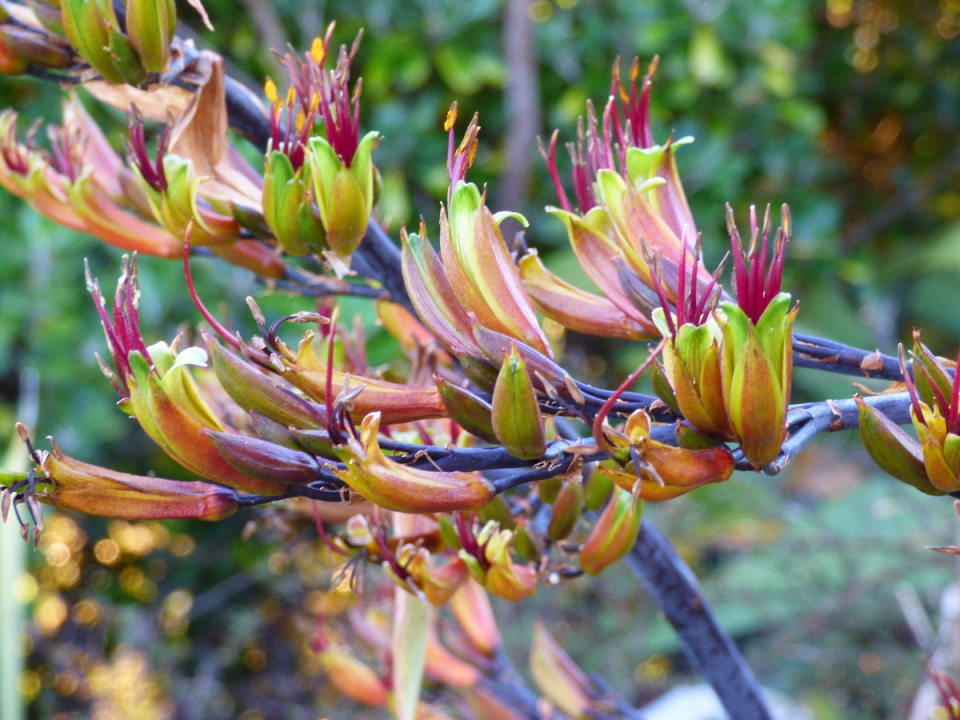Harakeke (NZ flax)
Harakeke was the name given to this plant by Mäori. The first European traders called it ‘flax’ because its fibres were similar to that of true flax found in other parts of the world. Although we still call it flax today, harakeke is really a lily. Flax is unique to New Zealand and is one of our most ancient plant species
Flax bushes often support
a large community of animals, providing shelter and an abundant food resource. Tui, bellbirds/korimako, saddlebacks/tïeke, short tailed bats/pekapeka, geckos and several types of insects enjoy nectar from the flax flower.
Flax snails, a rare land snail living only in the Far North, often shelter under flax bushes. These snails don’t eat any part of the flax.
Harakeke grows up to three metres high and its flower stalks
can reach up to four metres. It has seedpods that stand upright from the stems. There are numerous different varieties. Flax was the most important fibre plant to Mäori in New Zealand. Each pä or marae typically had a ‘pä harakeke’, or flax plantation. Different varieties were specially grown for their strength, softness, colour and fibre content.
Flax was a valuable resource to Pakeha (NZers of European descent) during the nineteenth century because of its strength. It was New Zealand’s biggest export by far until wool and frozen mutton took over later in the century. Today, flax is used in soaps, hand creams, shampoos and a range of other cosmetics. Flax- seed oil can also be found for sale.
Traditionally when harakeke leaves were removed from the plant, only the older leaves on the outside were taken. It was believed the three inner layers
of the plant represented a family. The outer layer represented the grandparents, whereas the inner layer of new shoots – the child – remained and were to be protected by the next inner layer of leaves, the parents.
The uses of harakeke fibre were numerous and varied. Clothing, mats, plates, baskets, ropes, bird snares, lashings, fishing lines and nets were all made from flax leaves. Floats or rafts were made out of bundles of dried flower stalks. The abundant nectar from flax flowers was used to sweeten food and beverages.
Flax also had many medicinal uses. The sticky sap
or gum that flax produces was applied to boils and wounds and used for toothache. Flax leaves were used in binding broken bones and matted leaves were used as dressings. Flax root juice was routinely applied to wounds as a disinfectant.
These bright flowers were seen early on this morning's run. Later on, as I went along the water's edge around the cliff I saw swallow chicks demanding to be fed. Possible to see a very hungry chick in my blipfolio


Comments
Sign in or get an account to comment.


